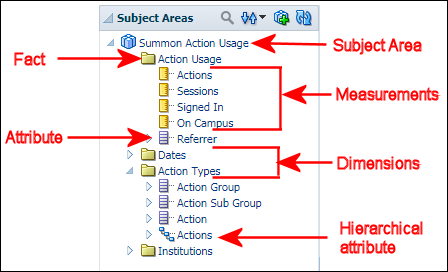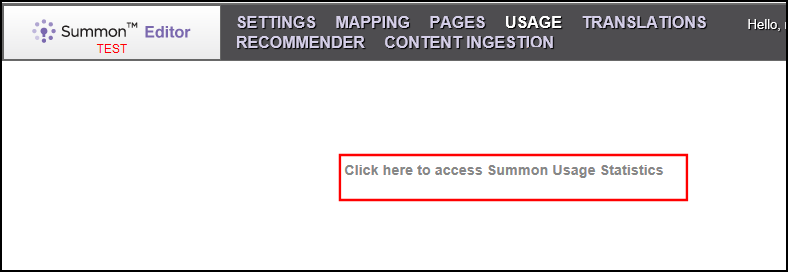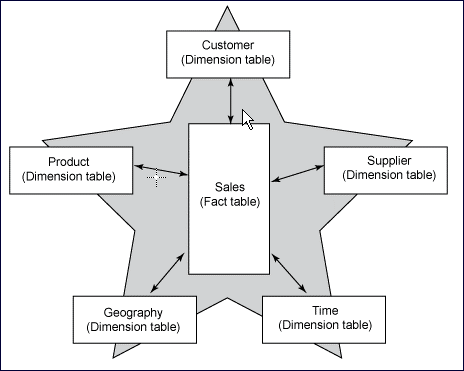Getting Started with Summon Analytics
Introduction
Summon Analytics enables you to run reports on library activities. You can use out-of-the-box reports that are provided by Ex Libris, or you can create your own reports. Groups of reports can be added to dashboards and customized. You can share reports and dashboards that you create with other Summon users in your institution or in other institutions. These reports help you to understand the activities that your library performs and to make informed decisions on how to run the library.
Summon Analytics is built on Oracle Business Intelligence Enterprise Edition 11.1.1.7 (OBI). This document describes unique aspects of this tool for Summon customers and basic analytics activities. For a thorough description of all the activities available in Summon Analytics, click the Help button to view the online help and Oracle documentation, or refer to the Oracle® Fusion Middleware User's Guide for Oracle Business Intelligence Enterprise Edition 11g Release 1 (11.1.1):
Refer to the following documentation, for information regarding Oracle Analytics Server (OAS), which will be replacing OBI in November 2020:
For information on how to convert your OBI reports to OAS, see Migrating Custom Reports from OBI to OAS instructions.pdf.
Terminology
| Term | Description |
|---|---|
|
Star Schema |
In computing, the star schema (also called star-join schema, data cube, or multidimensional schema) is the simplest style of data warehouse schema. The star schema consists of one or more fact tables that references any number of dimension tables.
Star Schema
|
|
Subject Area
|
Data in Summon Analytics is organized into subject areas such as Action Usage and Popular Searches. These subject areas contain folders, measurement columns, attribute columns, and hierarchical columns. For more information, see Subject Areas.
|
|
Fact Table
|
Consists of the measurements, metrics, or facts related to a type of usage or process and contains the core part of the subject area.
Often, the Fact table is located at the center of a star schema and is surrounded by Dimension tables. Each Fact table contains the core part of a subject area such as fund transactions or user loans. The relationship between a Fact table and its Dimension tables is one to many. For each entry in a Fact table, there is one record in the Dimension table.
|
|
Dimension Table
|
Tables that contain descriptive attributes (or fields) that are typically textual fields or discrete numbers behaving like text. Dimension attributes such as Dates, Action Types, or Institutions give facts a context.
|
|
Measurement Column
|
A column of data in subject areas that holds a simple list of data values that can change or can be counted or aggregated in some way.
|
|
Attribute Column
|
A column in subject areas that holds a flat list of values that are also known as members.
|
|
Hierarchical Attribute Column
|
An attribute holds data values that are organized in a hierarchy. This kind of attribute is displayed using a treelike structure. Individual members are shown in an outline manner, with lower-level members rolling into higher-level members.
|

Accessing Summon Analytics
-
Open the Summon Administration Console.
-
Click Usage at the top of the administration console to manage existing reports (2017 to present) or to create additional reports. The reports are built on Oracle Business Intelligence (OBI).
If you are using an Edge or IE11 and later browser, you will need to click an additional link to open Summon Analytics, which will open in a new tab:
 Link to Access Summon Analytics for Edge and IE11 and Later Browsers
Link to Access Summon Analytics for Edge and IE11 and Later Browsers


